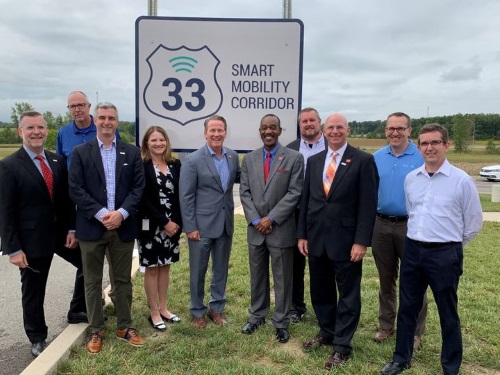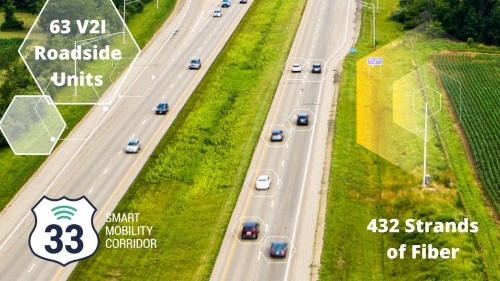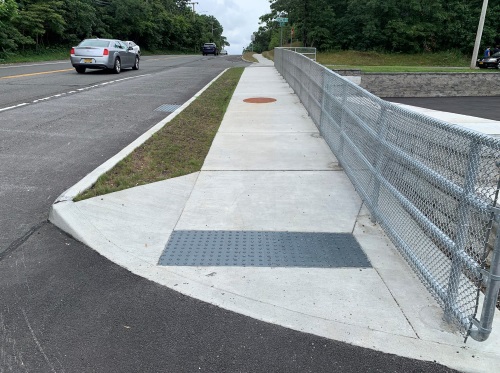FEDERAL ACTION
Infrastructure Bill Aligns With Key AASHTO Principles – AASHTO Journal
Hoyer affirms House will vote Sept. 27 on bipartisan infrastructure bill – The Hill
Democrats Face a Grueling Two Weeks as Infighting Erupts Over Infrastructure – Time
Electric bicycle tax credit makes progress in Congress but gets slashed from 30% to 15% – Electrek
EPA Rescinds Previous Administration’s Guidance on Clean Water Act Permit Requirements – EPA (Media release)
COVID-19
White House announces new system allowing fully vaccinated foreign nationals to fly to US – Yahoo News
Obama’s transportation chief to Biden: mandate vaccines for airline travel – Politico
Feds opt out of quarrel between N.Y. and N.J. over billions in COVID transit funding – Daily News
INFRASTRUCTURE RESILIENCE AND SUSTAINABILITY
5 critical ways to protect cities from disastrous flooding – Fast Company
DOTD takes steps to prevent flooding, prepares evacuation transportation in case of emergency – KLFY-TV
Building a More Sustainable Car, From Headlamp to Tailpipe – New York Times
This is what happens to all the rats when cities flood – CNN
AIR QUALITY
California drought driving up greenhouse gas emissions: study – The Hill
Infrastructure Bill Could Cut Carbon Emissions By Nearly a Gigaton – Scientific American
ENVIRONMENTAL JUSTICE
King County moves toward repealing bicycle helmet law – Crosscut
Attorneys General Urge Congress to Pay Up for Climate, Justice – Bloomberg Law
How the pandemic and a renewed focus on equity could reshape transportation – Washington Post (Commentary)
NATURAL RESOURCES
CDOT ramping up safety on U.S. 550 with wildlife underpass at Billy Creek – Montrose Press
Mudslide on scenic Colorado highway tests limits of aging infrastructure in era of climate change – NBC News
HEALTH AND HUMAN ENVIRONMENT/ACTIVE TRANSPORTATION
State Active Transportation Plan journey continues with Part 2 – Washington State Department of Transportation
South Middleton Township finalizes Active Transportation Plan – The Sentinel
Pensacola pedestrian, cyclist-friendly complete streets model back in focus with $166K boost – Pensacola News Journal
Tempe, With Multimodal Transportation Push, Eyes Higher Ranking On Alternative-Transit List – Wrangler News
New cycling infrastructure launched in New Haven – Yale Daily News
Is There Room for E-Scooters in New York City? – CityLab
TRB RESOURCES/ANNOUNCEMENTS
TRB Webinar: Improving Bus Stops through Transit Agency Relationships – TRB
TRB Webinar: Transportation Resilience Metrics – TRB
Charting A Path Forward In Environmental Justice – The National Academies of Sciences, Engineering, and Medicine
Weather Responsive Management Strategies – FHWA Center for Accelerating Innovation
FEDERAL REGISTER NOTICES
America’s Supply Chains and the Transportation Industrial Base – Office of the Secretary of Transportation (Notice of request for information)
Notice for Comment on Two Strategic Plans for the Subcommittee on Aquaculture Science Planning and Regulatory Efficiency Task Forces and on Updating the National Aquaculture Development Plan – Agricultural Research Service (Notice and request for comments)
Safety Zones; Hampton Roads Bridge- Tunnel Expansion Project, Hampton/ Norfolk, VA – Coast Guard (Temporary final rule)
Drone Advisory Committee (DAC); Notice of Public Meeting – FAA (Notice)
Notice of Final Agency Actions on Proposed Railroad Project in California, on Behalf of the California High Speed Rail Authority – FRA (Notice)
Draft General Conformity Determination for the California High-Speed Rail System Burbank to Los Angeles Section – FRA (Notice; request for comment)
Tahoe National Forest; California; North Yuba Landscape Resilience Project EIS – Forest Service (Notice of intent to prepare an environmental impact statement)
Notice of Proposed Subaward Under a Council-Selected Restoration Component Award – Gulf Coast Ecosystem Restoration Council (Notice)
Management of Floating Cabins – Tennessee Valley Authority (Issuance of record of decision)



